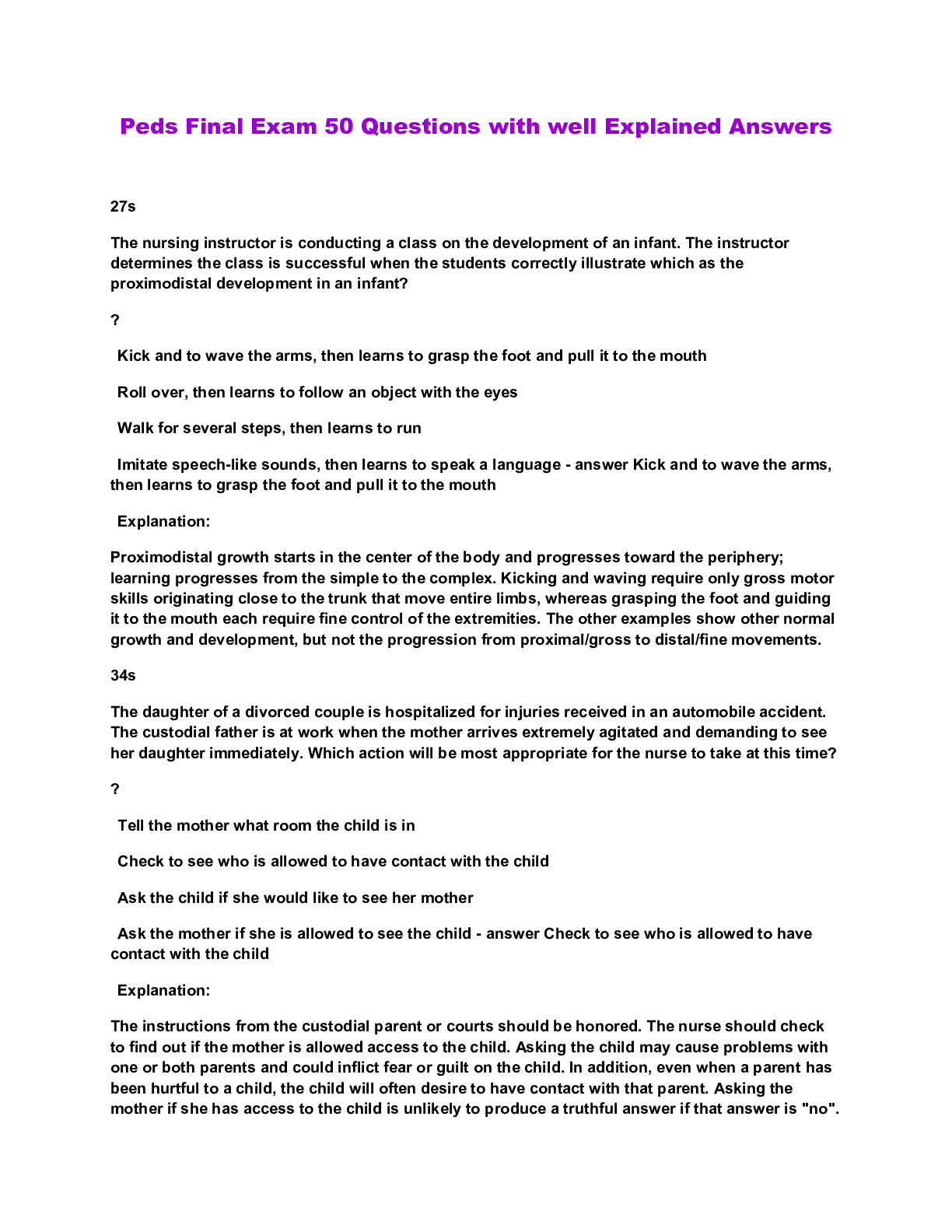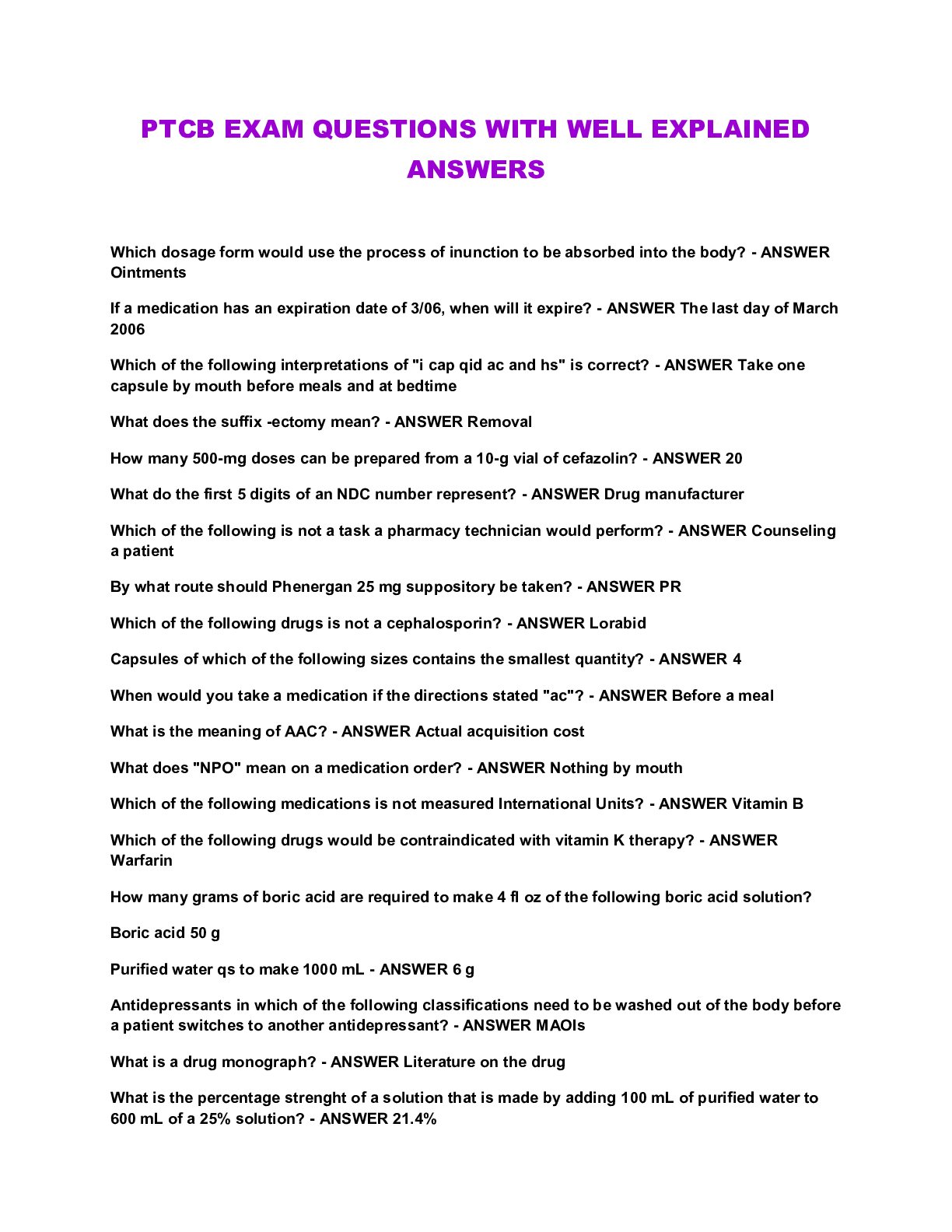*NURSING > QUESTIONS & ANSWERS > Evolve Comprehensive Exam RN 2022 with well explained answers (All)
Evolve Comprehensive Exam RN 2022 with well explained answers
Document Content and Description Below
Evolve Comprehensive Exam (Hesi) 2022 with well explained answers A client with asthma receives a prescription for high blood pressure during a clinic visit. Which prescription should the nurse antic... ipate the client to receive that is at least likely to exacerbate asthma? Correct Answer- Metoprolol Tartrate( Lopressor) The best antihypertensive agent for clients with asthma is metoprolol (Lopressor) (C), a beta2 blocking agent which is also cardioselective and less likely to cause bronchoconstriction. Pindolol (A) is a beta2 blocker that can cause bronchoconstriction and increase asthmatic symptoms. Although carteolol (B) is a beta blocking agent and an effective antihypertensive agent used in managing angina, it can increase a client's risk for bronchoconstriction due to its nonselective beta blocker action. Propranolol (D) also blocks the beta2 receptors in the lungs, causing bronchoconstriction, and is not indicated in clients with asthma and other obstructive pulmonary disorders. A male client who has been taking propranolol ( inderal) for 18 months tells the nurse the healthcare provider discontinued the medication because his blood pressure has been normal for the past three months. Which instruction should the use provide? Correct Answer- Ask the health care provider about tapering the drug dose over the next week. Although the healthcare provider discontinued the propranolol, measures to prevent rebound cardiac excitation, such as progressively reducing the dose over one to two weeks (C), should be recommended to prevent rebound tachycardia, hypertension, and ventricular dysrhythmias. Abrupt cessation (A and B) of the beta-blocking agent may precipitate tachycardia and rebound hypertension, so gradual weaning should be recommended. A client who is taking clonidine ( Catapres, Duraclon) reports drowsiness. Which additional assessment should the nurse make? Correct Answer- How long has the client been taking the medication Drowsiness can occur in the early weeks of treatment with clonidine and with continued use becomes less intense, so the length of time the client has been on the medication (A) provides information to direct additional instruction. (B, C, and D) are not relevant. The nurse is preparing to admister atropine, an anticholinergic, to a client who is scheduled for a cholecystectomy. The client asks the nurse to explain th reason for the prescribed medication. What response is best for the nurse to provide? Correct Answer- Decrease the risk of bradycardia during surgery Atropine may be prescribed preoperatively to increase the automaticity of the sinoatrial node and prevent a dangerous reduction in heart rate (B) during surgical anesthesia. (A, C and D) do not address the therapeutic action of atropine use perioperatively. An 80 year old client is given morphine sulphate for postoperative pain. Which concomitant medication should the nurse question that poses a potential development of urniary retention in this geriatric client. ? Correct Answer- Tricyclic antidepressants Drugs with anticholinergic properties, such as tricyclic antidepressants (C), can exacerbate urinary retention associated with opioids in the older client. Although tricyclic antidepressants and antihistamines with opioids can exacerbate urinary retention, the concurrent use of (A and B) with opioids do not. Nonsteroidal antiinflammatory agents (D) can increase the risk for bleeding, but do not increase urinary retention with opioids (D). The nurse obtains a heart rate of 92 and a blood pressure of 110/76 prior to administering a scheduled dose of verapamil (Calan) for a client with atrial flutter Which action should the nurse implement? Correct Answer- Admister the dose as prescribed Verapamil slows sinoatrial (SA) nodal automaticity, delays atrioventricular (AV) nodal conduction, which slows the ventricular rate, and is used to treat atrial flutter, so (A) should be implemented, based on the client's heart rate and blood pressure. (B and C) are not indicated. (D) delays the administration of the scheduled dose. following an emergency Cesarean delivery the nurse encourages the new mother to breastfed her newborn . the client asks why she should breastfeed now. Which info should the nurse provide? Correct Answer- Stimulate contraction of the uterus When the infant suckles at the breast, oxytocin is released by the posterior pituitary to stimulates the "letdown" reflex, which causes the release of colostrum, and contracts the uterus (C) to prevent uterine hemorrhage. (A and B) do not support the client's need in the immediate period after the emergency delivery. Although maternal-newborn bonding (D) is facilitated by early breastfeeding, the priority is uterine contraction stimulation. The nurse identifies a clients needs and formulates th nursing problem of " Imbalancee nutrition: Less than body requirements, related to mental impairment and decreased intkae, as evidence by increasing confusion and weight loss of more than 30 pounds over the last 6 months. " which short-term goal is best for this client? Correct Answer- Eat 50% of six small meals each day by the end of the week Short-term goals should be realistic and attainable and should have a timeline of 7 to 10 days before discharge. (A) meets those criteria. (B) is nurse-oriented. (C) may be beyond the capabilities of a confused client. (D) is a long-term goal. the nursie is caring for a client who is unable to void. The plan of care establishes an objective for the client to ingest at least 1000 mL of fluid between 7:00 am and 3:30pm. Which client response should the nurse document that indicates a successful outcome? Correct Answer- Drinks 240 mL of fluid five times during the shift. The nurse should evaluate the client's outcome by observing the client's performance of each expected behavior, so drinking 240 mL of fluid five or six times during the shift (D) indicates a fluid intake of 1200 to 1440 mL, which meets the objective of at least 1000 mL during the designated period. (A) uses the term "adequate," which is not quantified. (B) is not the objective, which establishes an intake of at least 1000 mL. (C) is not an evaluation of the specific fluid intake. a client who has active tuberculosis ( TB) is admitted to the medical unit. What action is most important for the nurse to implement? Correct Answer- Assign the client to a negative air-flow room Active tuberculosis requires implementation of airborne precautions, so the client should be assigned to a negative pressure air-flow room (D). Although (A and C) should be implemented for clients in isolation with contact precautions, it is most important that air flow from the room is minimized when the client has TB. (B) should be implemented when the client leaves the isolation environment. A client is receiving atonal (tenormin) 25 mg PO after a myocardial infraction. The nurse determines the clinents apical pulse is 65 beats per minute. What action should the nurse implement next? Correct Answer- Administer the medication Atenolol, a beta-blocker, blocks the beta receptors of the sinoatrial node to reduce the heart rate, so the medication should be administered (C) because the client's apical pulse is greater than 60. (A, B, and D) are not indicated at this time. A 6 year old child is alert but quiet when brought to the emergency center with periobital ecchymosis and ecchymosis behind the ears. The nurse suspects potential child abuse and continues to assess the child for additional manifestations of a basilar skull fracture. What assessment finding would be consistent with the basilar skull fracture? Correct Answer- Rhinorrhoea or otorrhoea with halo sign Raccoon eyes (periorbital ecchymosis) and Battle's sign (ecchymosis behind the ear over the mastoid process) are both signs of a basilar skull fracture, so the nurse should assess for possible meningeal tears that manifest as a Halo sign with CSF leakage from the ears or nose (D). (A) is consistent with orbital fractures. (B) occurs with wrenching traumas of the shoulder or arm fractures. (C) occurs with blunt abdominal injuries. The nurse is assessing a client who complains of weight loss, racing heart rate and difficulty sleeping. The nurse determines the client has moist skin with fine hair, prominent eyes, lid retrace, and a staring expression. These findings are consistent with which disorder? Correc [Show More]
Last updated: 1 year ago
Preview 1 out of 33 pages
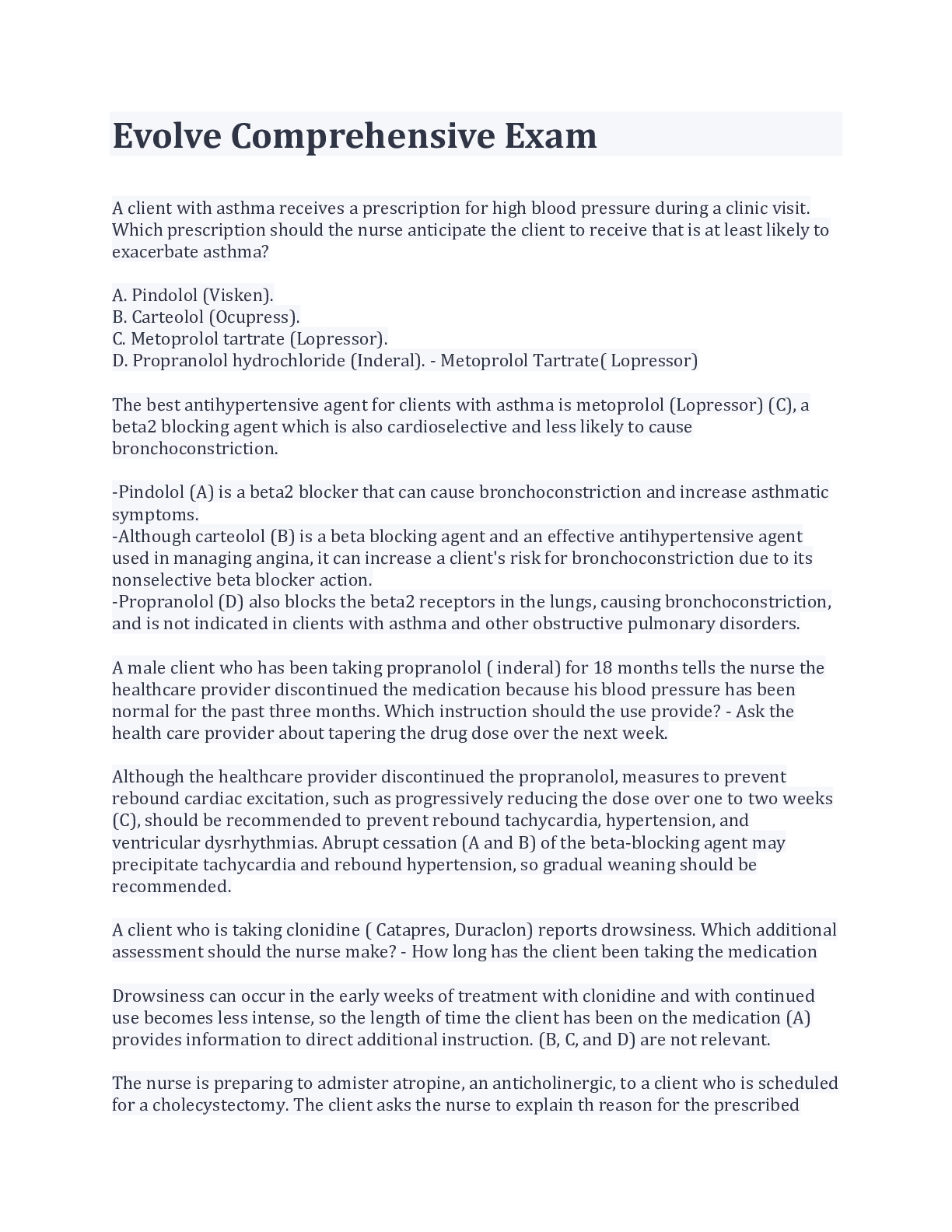
Reviews( 0 )
Document information
Connected school, study & course
About the document
Uploaded On
May 25, 2022
Number of pages
33
Written in
Additional information
This document has been written for:
Uploaded
May 25, 2022
Downloads
0
Views
126
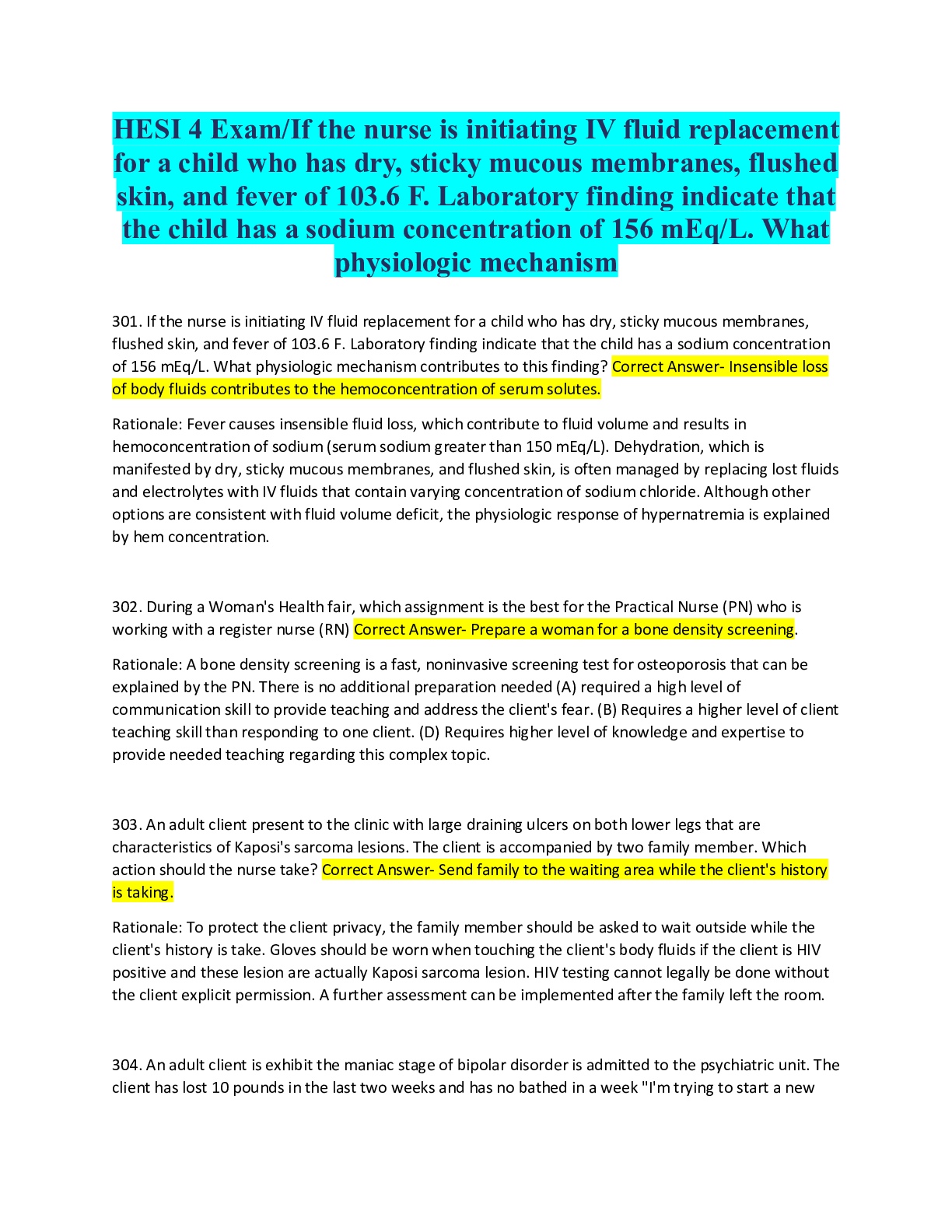

.png)
.png)
.png)
.png)
.png)
.png)


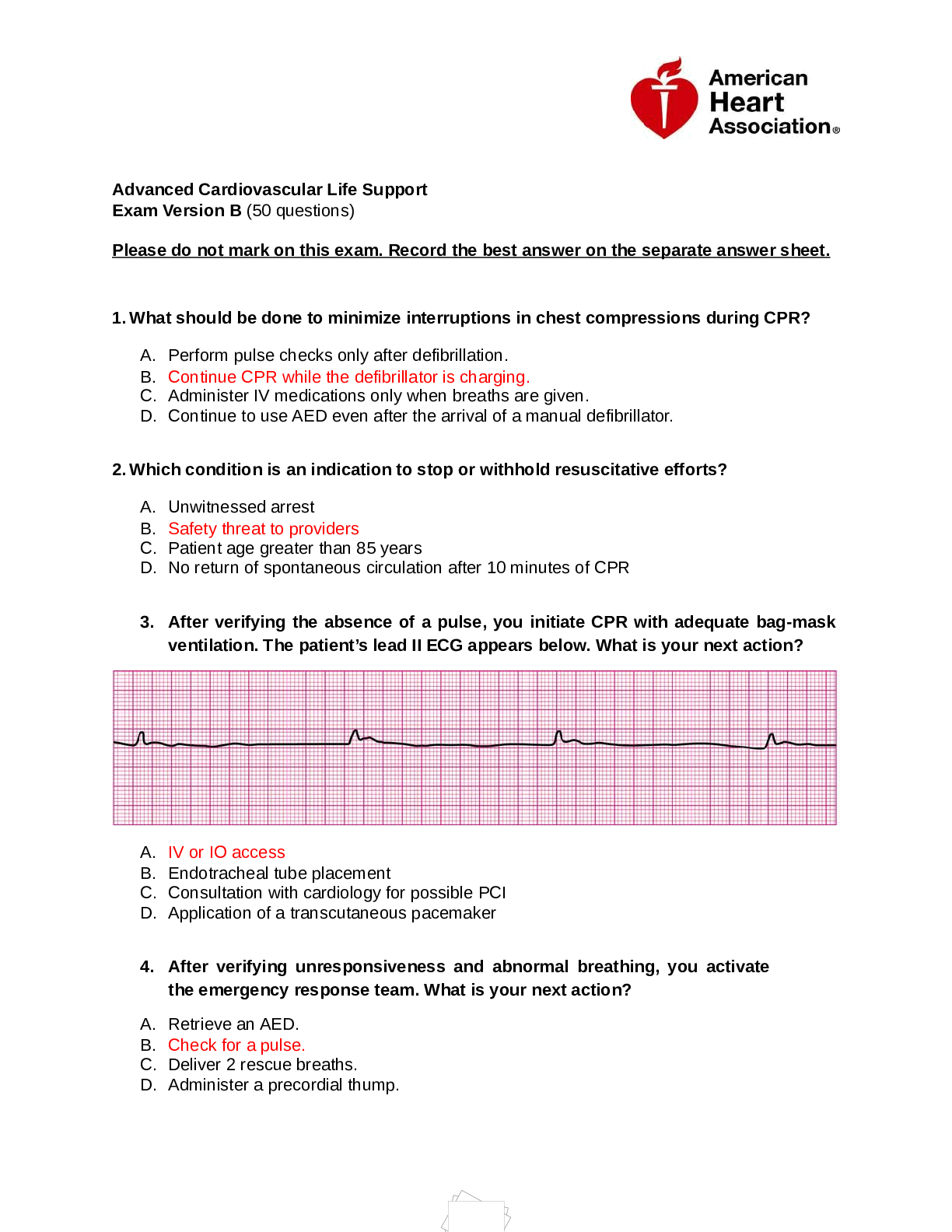


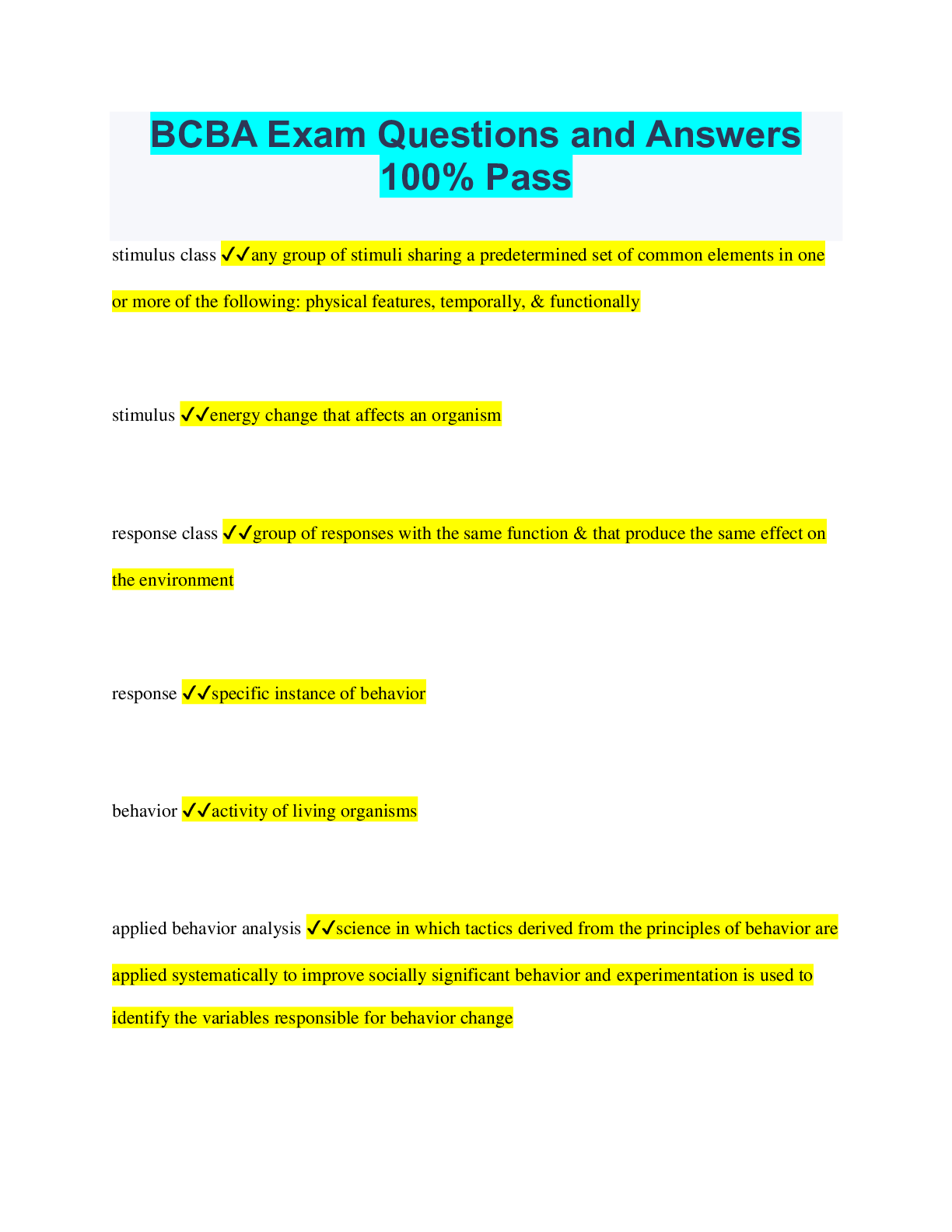
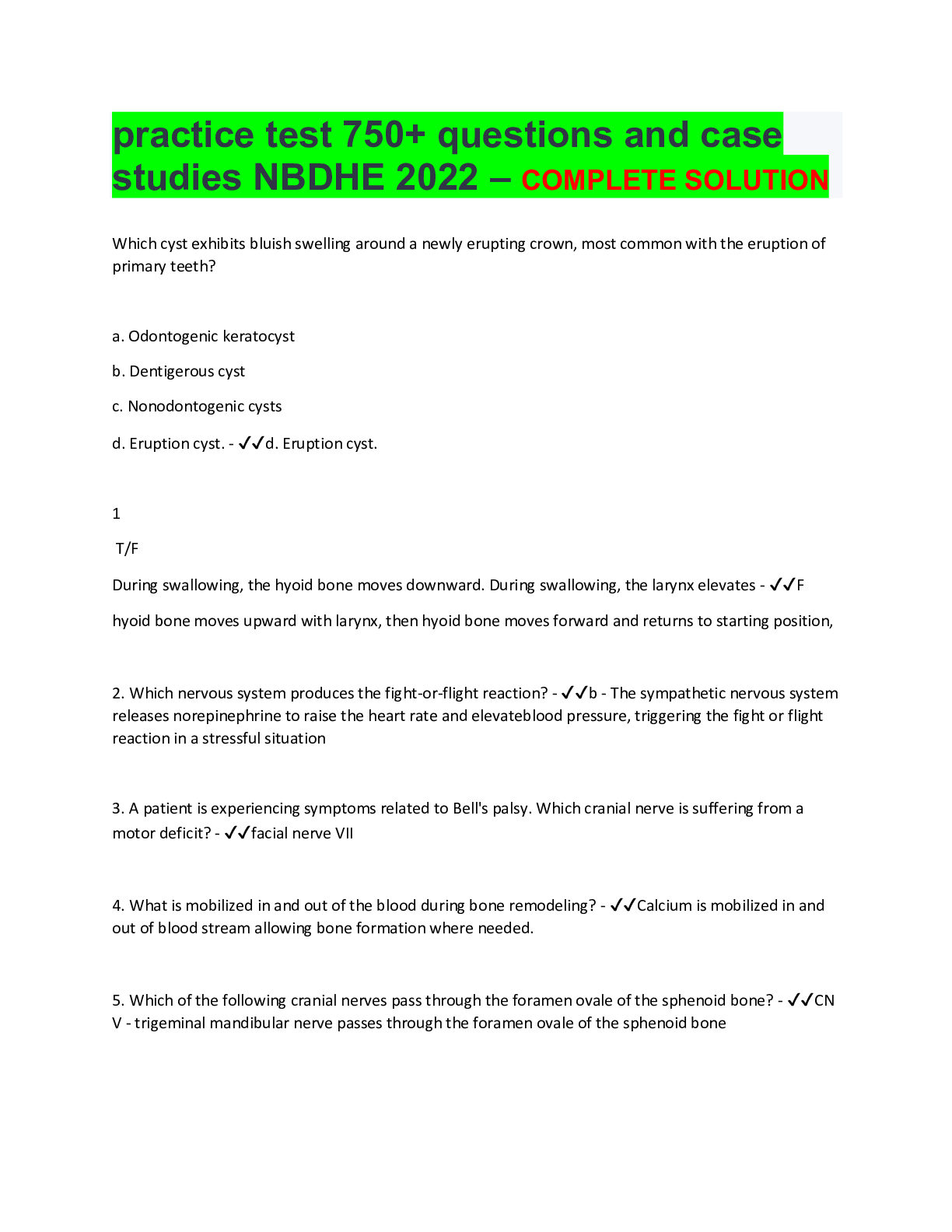
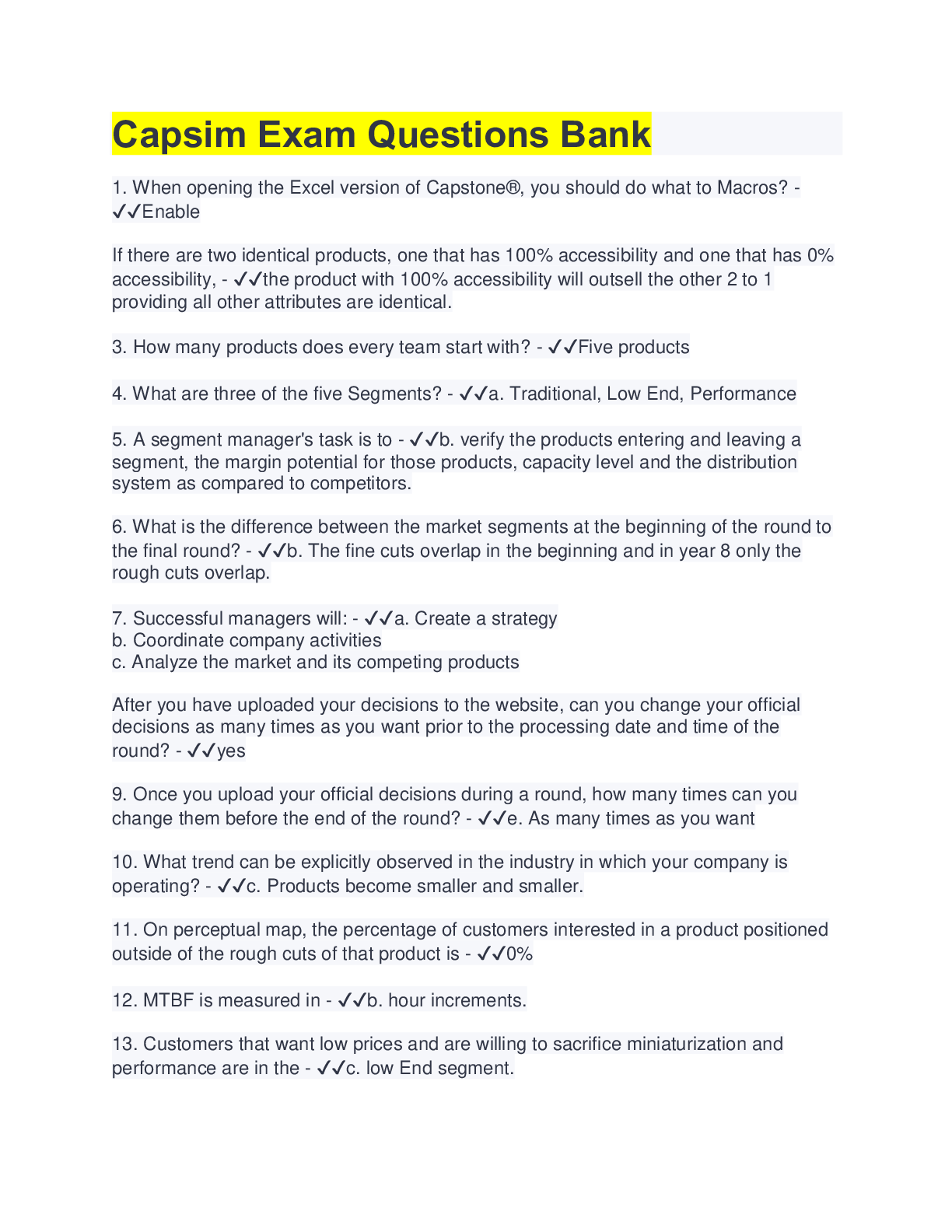
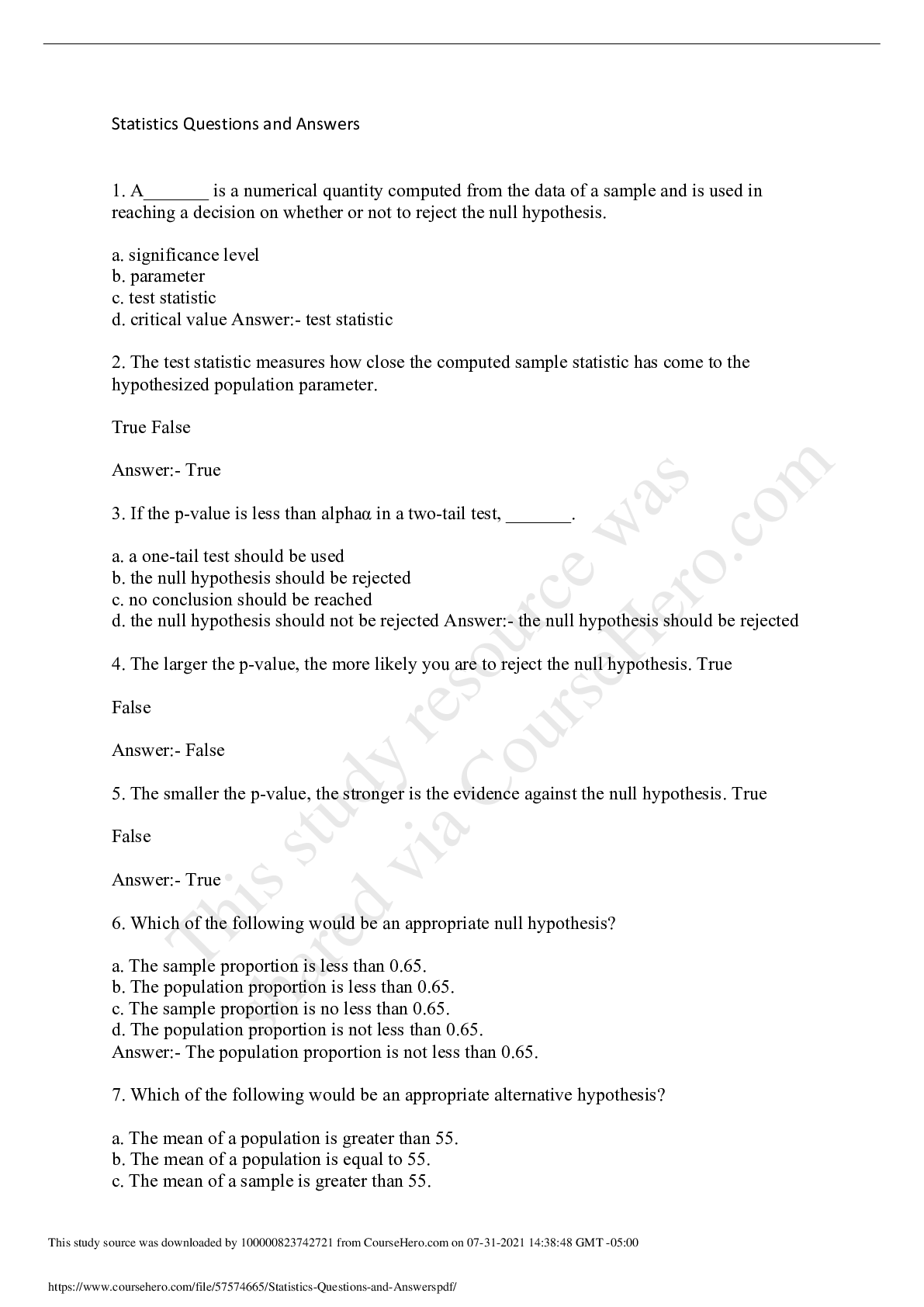

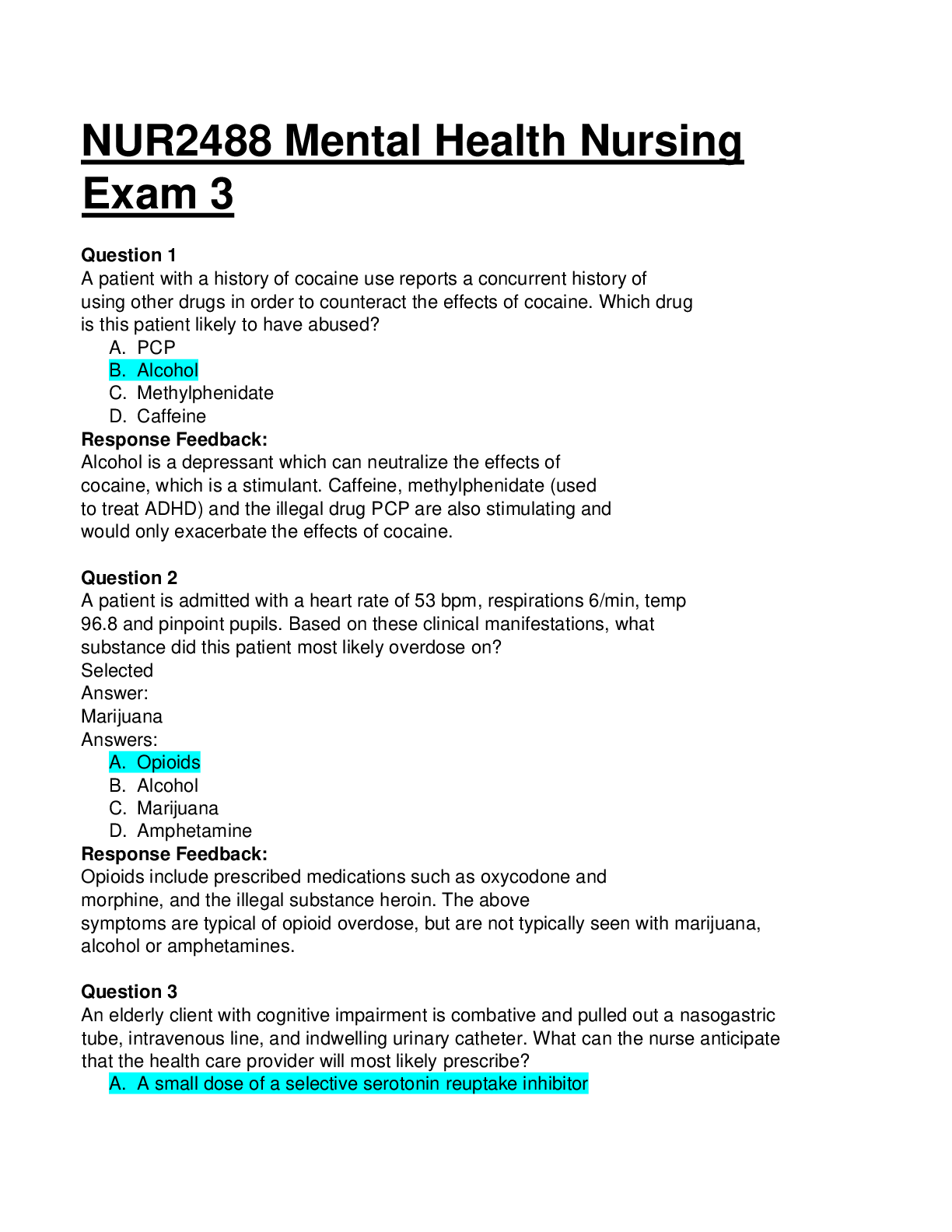
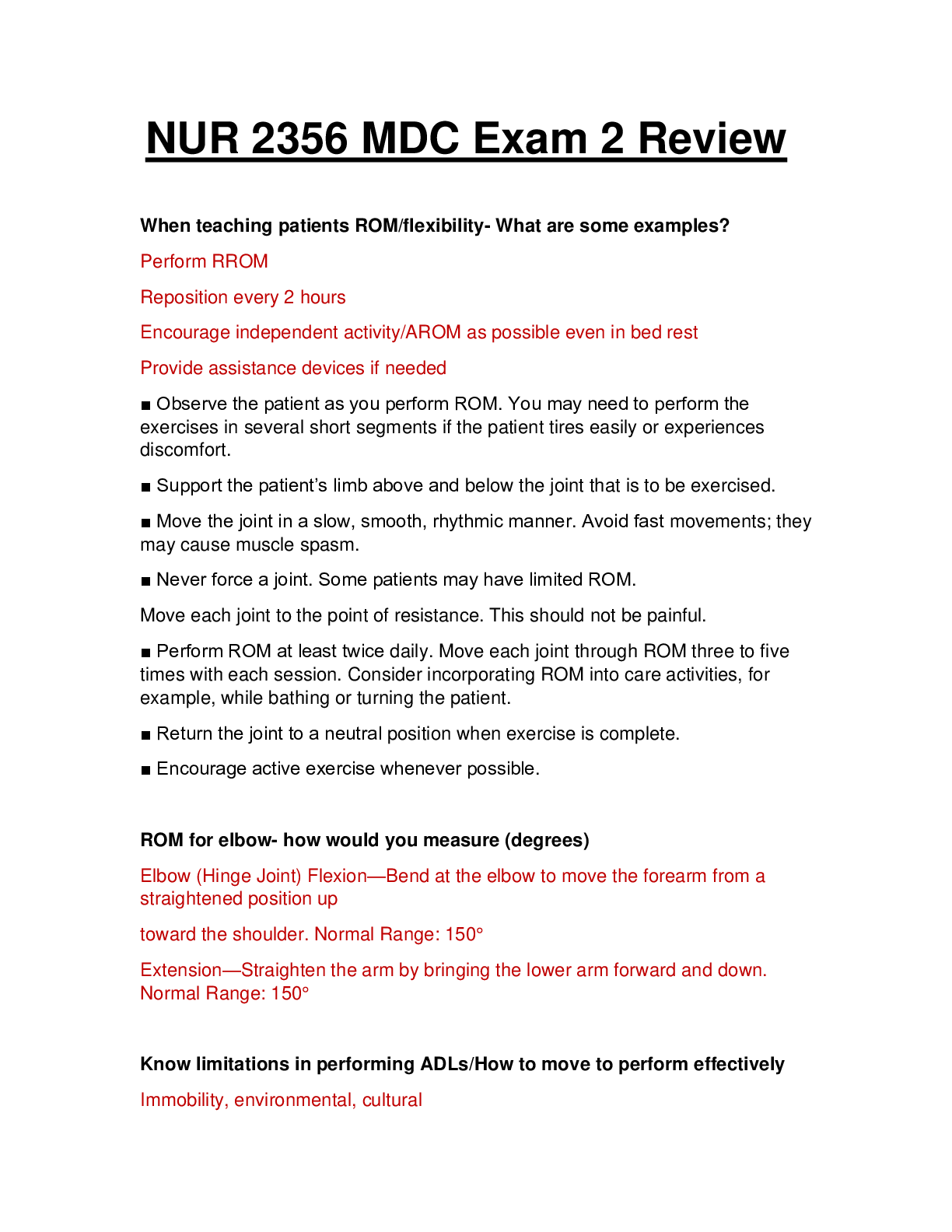

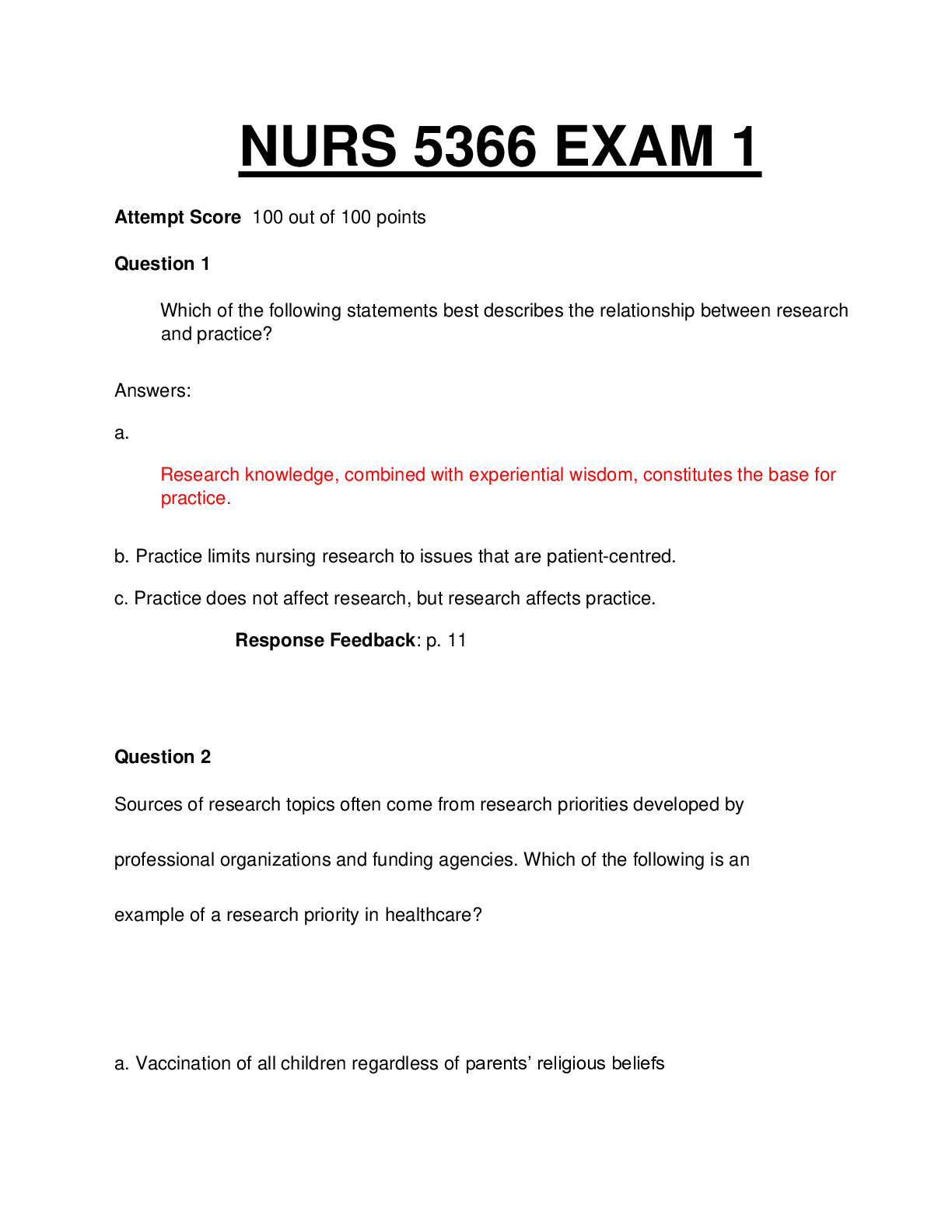





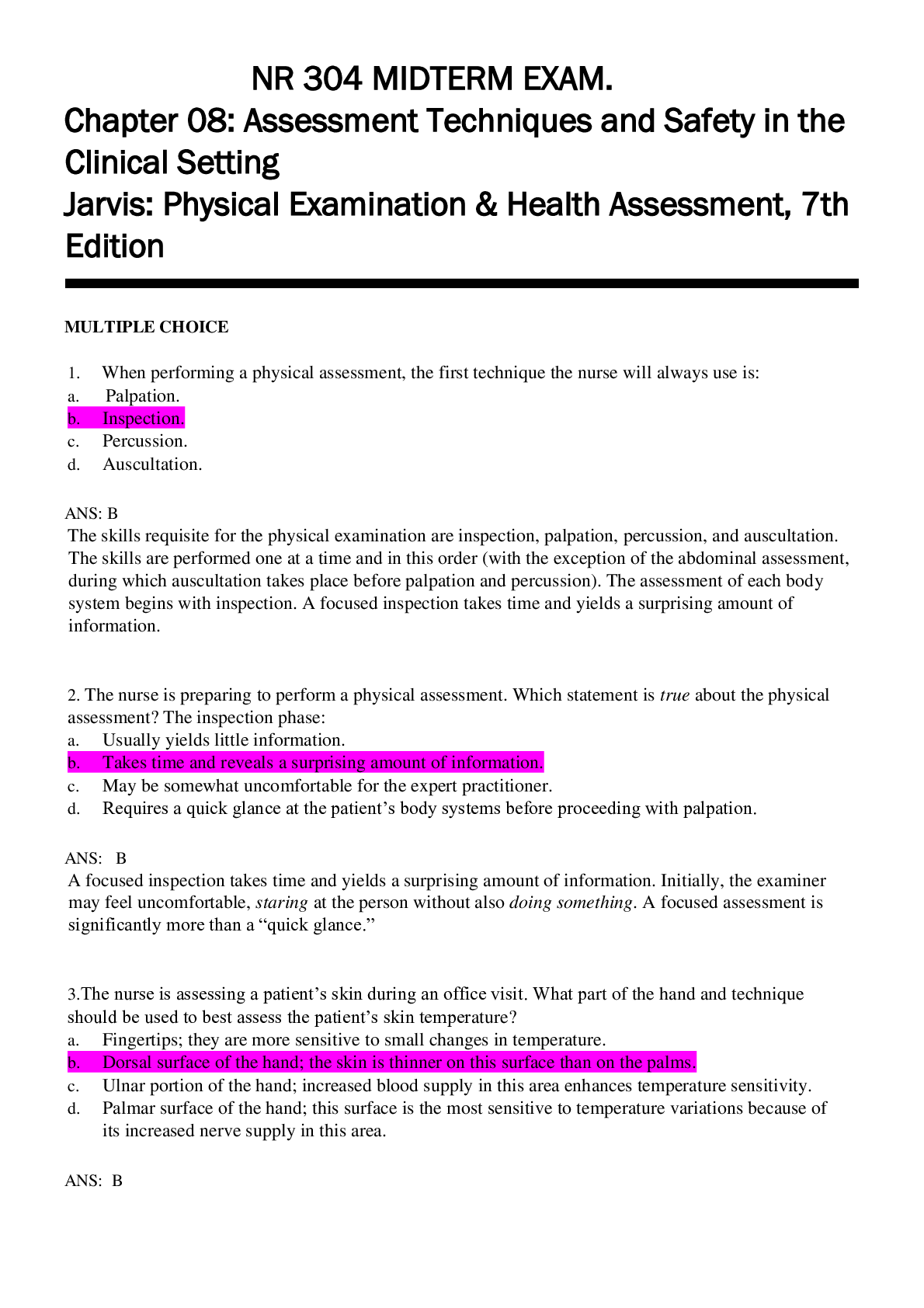
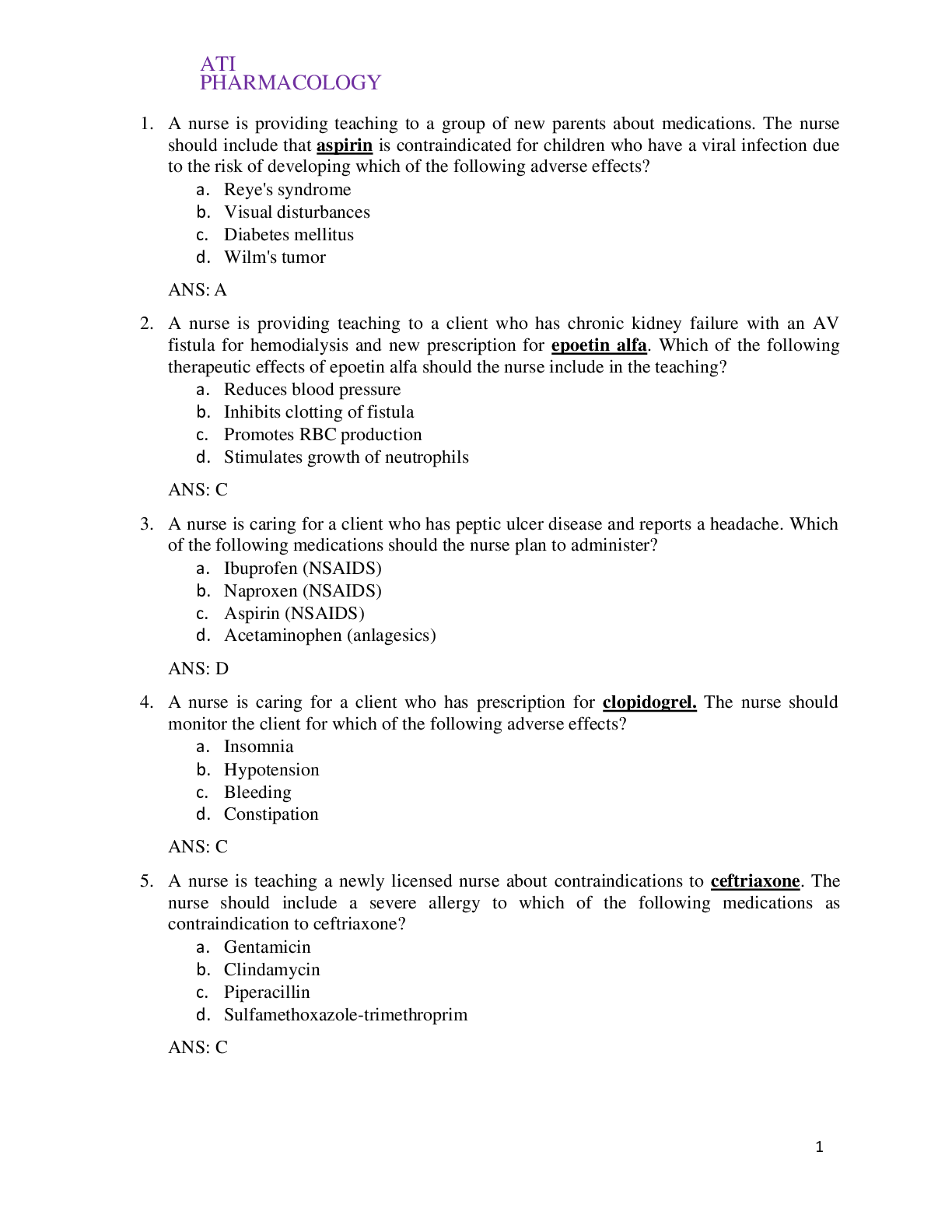
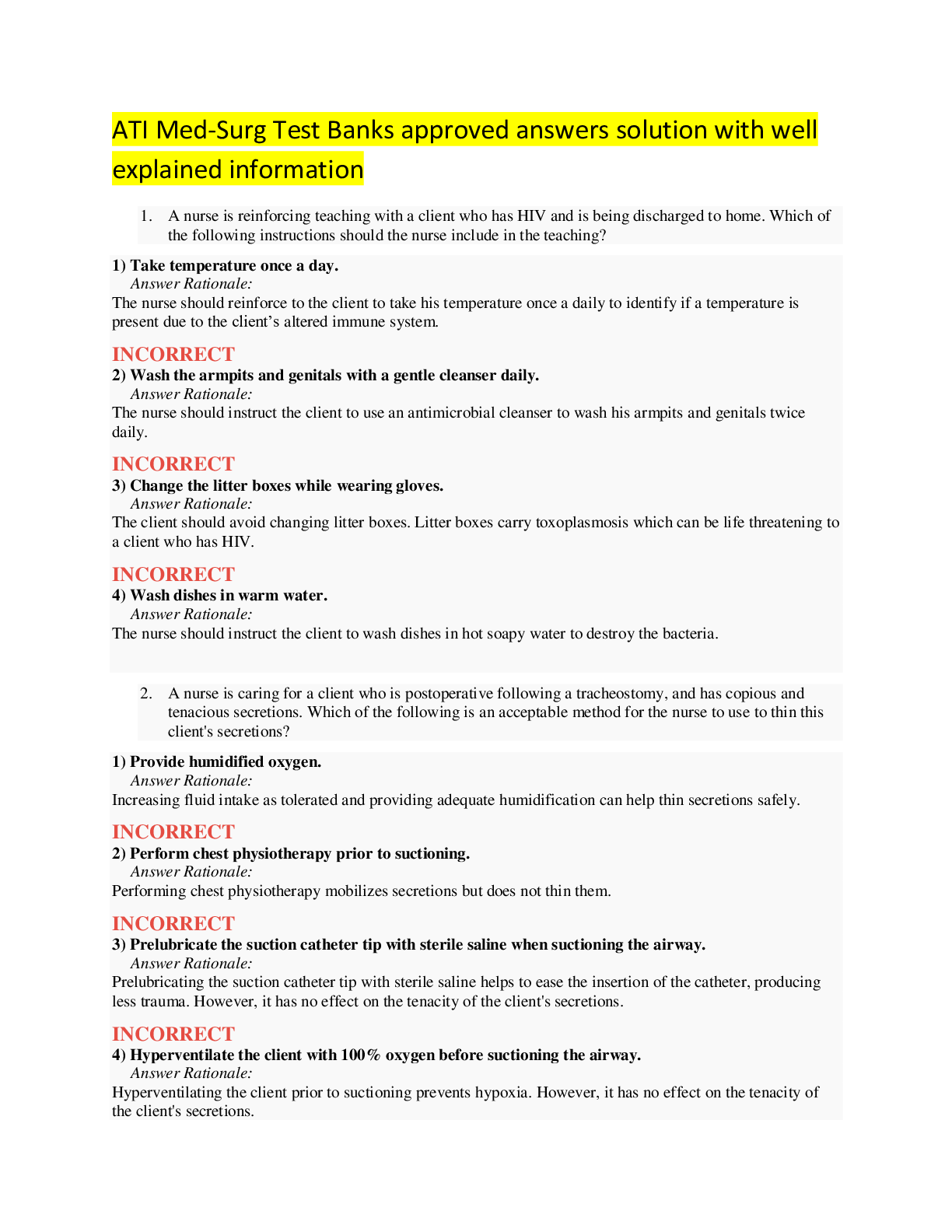
.png)
